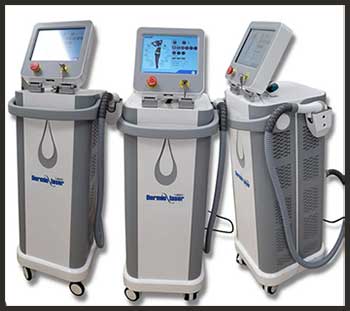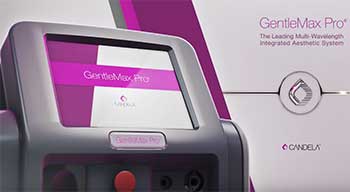Lasers have become an increasingly popular tool in medical aesthetics for treating various skin conditions and performing cosmetic procedures. Two of the most common types of lasers used are diode and candela lasers.
But what exactly is the difference between the two and which one is better? This comprehensive guide examines the pros, cons and key differences between diode and candela lasers to help you determine which is best for your needs.
A Brief Comparison Table
| Feature | Diode Laser | Candela Laser |
| Mechanism | Semiconductor diode | Flashlamp pumped dye |
| Wavelength | 800-810 nm, 940 nm | 585-600 nm |
| Depth of Penetration | Shallow | Deeper |
| Treatment Areas | Hair removal, acne, wrinkles | Vascular lesions, tattoos, pigmented lesions |
| Pain Level | Low | Higher |
| Cost | Lower | Higher |
What Is A Diode Laser?
A diode laser utilizes a semiconductor diode as its laser medium to generate a beam of coherent light. The beam is typically delivered through an optical fiber to the treatment area.
The most common diode laser wavelengths used in aesthetic treatments are:

- 800-810 nm – Used for hair removal and treating inflammatory acne. This wavelength is well absorbed by melanin in hair follicles and hemoglobin, making it effective at disabling hair follicles and targeting acne bacteria.
- 940 nm – Penetrates deeper in the dermis and is used for skin tightening and smoothing wrinkles. It stimulates collagen production by heating the dermis while avoiding damage to the epidermis.
Pros Of Diode Lasers:
- Effective for hair removal and acne treatment
- Causes less pain and requires less downtime compared to other laser types
- Little to no risk of scarring or pigment changes
- Treats all skin types, from light to dark complexions
- Smaller treatment tip sizes allow precision
- Relatively affordable cost
Cons Of Diode Lasers:
- Limited depth of penetration so less effective for vascular and pigmented lesions
- Multiple treatments needed for long-term hair removal
- Higher risk of burns if not used properly
- Not as effective for treating darker skin tones
What Is A Candela Laser?
Candela lasers use a flashlamp pumped dye as the laser medium. The dye solution absorbs light energy from the flashlamp and converts it into a laser beam in the desired wavelength.
Some common Candela laser wavelengths and their uses:

- 595 nm – The original Candela Vbeam laser targets hemoglobin to treat vascular lesions like spider veins, port wine stains and scars.
- 585 nm – Used for treating benign pigmented lesions, sun/age spots and tattoos by targeting melanin.
- 1064 nm – Longer wavelength allows deeper penetration to treat deeper vascular and pigmented lesions.
Pros Of Candela Lasers:
- Very effective for treating vascular and pigmented lesions
- Permanent results in fewer treatments for vascular lesions
- Large spot sizes allow faster treatment of larger areas
- Deeper penetration reaches deeper lesions
- Dynamic cooling protects surface skin during treatment
- Proven safe and effective with long track record
Cons Of Candela Lasers:
- Much more expensive purchase and treatment costs
- Higher risk of burns, blistering and scarring if not used properly
- Not as effective for hair removal or acne
- Increased pain during treatments
- Higher downtime due to blistering risk
- Not suitable for tanned or darker skin tones
Also Read: Dr. Pen M8 Vs. M8S – Which Microneedling Pen Is Best?
Key Feature Comparison
Now that we’ve looked at diode and candela lasers individually, let’s directly compare some of their key features:
Wavelength
- Diode lasers have shorter wavelengths, usually 800-810nm or 940nm. This limits depth of penetration.
- Candela lasers emit longer wavelengths of 585nm, 595nm or 1064nm allowing deeper penetration into the skin.
Depth of Penetration
- Diode laser depth is shallow, only penetrating the epidermis and upper dermis.
- Candela lasers reach the deeper dermis, making them better for deeper lesions.
Treatment Areas
- Diode lasers are preferred for hair removal and inflammatory acne treatment.
- Candela lasers are superior for treating vascular lesions, tattoos, benign pigmented lesions.
Pain and Downtime
- Diode laser treatments are usually less painful with minimal downtime.
- Candela laser treatments often cause more pain during the procedure and have increased downtime due to the risk of blistering.
Skin Tone
- Diode lasers can usually be used safely on all skin tones.
- Candela lasers have greater risks on tanned or dark skin tones.
Cost
- Diode laser systems and treatment costs are significantly less expensive.
- Candela lasers have very high upfront costs and higher per treatment costs.
Frequently Asked Questions (FAQ)
The Candela laser is not definitively “better” than diode lasers. Each has pros and cons that make them better suited for certain applications.
Candela lasers are superior for treating vascular and pigmented lesions due to their longer wavelengths that target hemoglobin and melanin at deeper levels in the skin. However, they carry higher risks on darker skin tones.
Diode lasers cannot match the results of Candela lasers for vascular and pigmented lesions. However, they are safer for darker skin types and excel at hair removal and acne treatment thanks to their shorter wavelengths targeting melanin and hemoglobin more superficially.
So in determining if Candela is better, it depends on your specific condition and skin type. For vascular lesions, Candela would be the preferred choice, but for hair removal diode would be better for most skin tones.
Again this depends on the specific application:
(1) For hair removal, diode lasers tend to provide better results and are safer on darker skin tones. Their 800-810nm wavelength is highly absorbed by hair follicle melanin.
(2) For treating acne, diode lasers around 810nm work best to reduce inflammation and kill acne bacteria.
(3) For spider veins, port wine stains, and other vascular lesions, Candela lasers penetrate deeper and specifically target hemoglobin to achieve better clearance.
(4) For pigmented lesions and tattoos, the longer Candela wavelengths target melanin more effectively. But diode lasers may still be used effectively in lighter skin.
So for vascular and pigmented lesions, Candela laser is often the better option. But for hair removal and acne, diode lasers are typically more effective and safe.
No, diode lasers are not universally the most effective. Their shallow penetration and short wavelengths limit their capabilities for certain conditions compared to other laser types like Candela.
Diode laser is very effective for:
(1) Hair removal, especially on lighter skin tones. The 800-810nm wavelength disables hair follicles by targeting melanin.
(2) Inflammatory acne treatment. The diode wavelength kills p. acnes bacteria and reduces inflammation.
Skin rejuvenation. 940nm wavelength stimulates collagen production for skin tightening and wrinkle reduction.
However, for conditions like vascular lesions, pigmented lesions and tattoo removal, deeper penetrating lasers like the Candela are more effective than diode lasers.
So while diode laser is extremely effective for hair and acne treatment, it is not the most universally effective laser for all aesthetic applications. You need to consider wavelength, depth, and skin type for optimal results.
The Candela GentleYAG is a 1064nm Nd:YAG laser, while diode lasers emit lower wavelengths like 800nm or 940nm. Here are some key differences:
Wavelength
Diode Laser: 800-810nm or 940nm
Candela GentleYAG: 1064nm
The 1064nm YAG wavelength allows deeper penetration than diode wavelengths.
Mechanism
Diode Laser: Semiconductor diode medium
GentleYAG: Neodymium-doped yttrium aluminum garnet (Nd:YAG) crystal medium
Treatment Areas
Diode Laser: Hair removal, acne, skin rejuvenation
GentleYAG: Vascular lesions, wrinkles, acne scars
The GentleYAG penetrates deeper and is better for treating vascular and textural issues.
Downtime
Diode Laser: Minimal downtime
GentleYAG: Some downtime due to risk of blistering
Pain Level
Diode Laser: Low pain
GentleYAG: Moderately painful
Cost
Diode Laser: Lower cost
GentleYAG: Expensive laser with higher cost per treatment
Also Read: Choose Between Cynosure Apogee Elite And Candela.
Verdict
In summary, the GentleYAG penetrates deeper and is more effective for vascular lesions, scars and wrinkles, while the diode laser is cheaper, less painful and better for superficial hair and acne issues. Overall, neither diode nor candela lasers are universally “better” – each has advantages that make it more suitable for certain applications and skin types.
For vascular lesions like spider veins, port wine stains, and scar treatment, candela lasers are typically more effective due to their longer wavelengths that target hemoglobin deeper in the skin. However, for hair removal and inflammatory acne treatment, diode lasers tend to provide better results across most skin types. Their shorter wavelengths target melanin in hair follicles and acne bacteria more efficiently.
Diode lasers also tend to be safer for patients with darker skin tones, while candela lasers carry higher risks of burns and hypopigmentation. In terms of costs, diode laser systems and treatments are significantly more affordable and accessible than candela options.
So in summary:
- For vascular lesions, candela lasers are superior
- For hair removal and acne, diode lasers are preferable
- Diode lasers are safer on darker skin
- Diode options are more budget-friendly
The ideal laser depends on the specific skin condition and cosmetic goals, as well as the patient’s skin type and budget. Consult with an experienced dermatologist or laser specialist to determine which type is right for your unique needs.